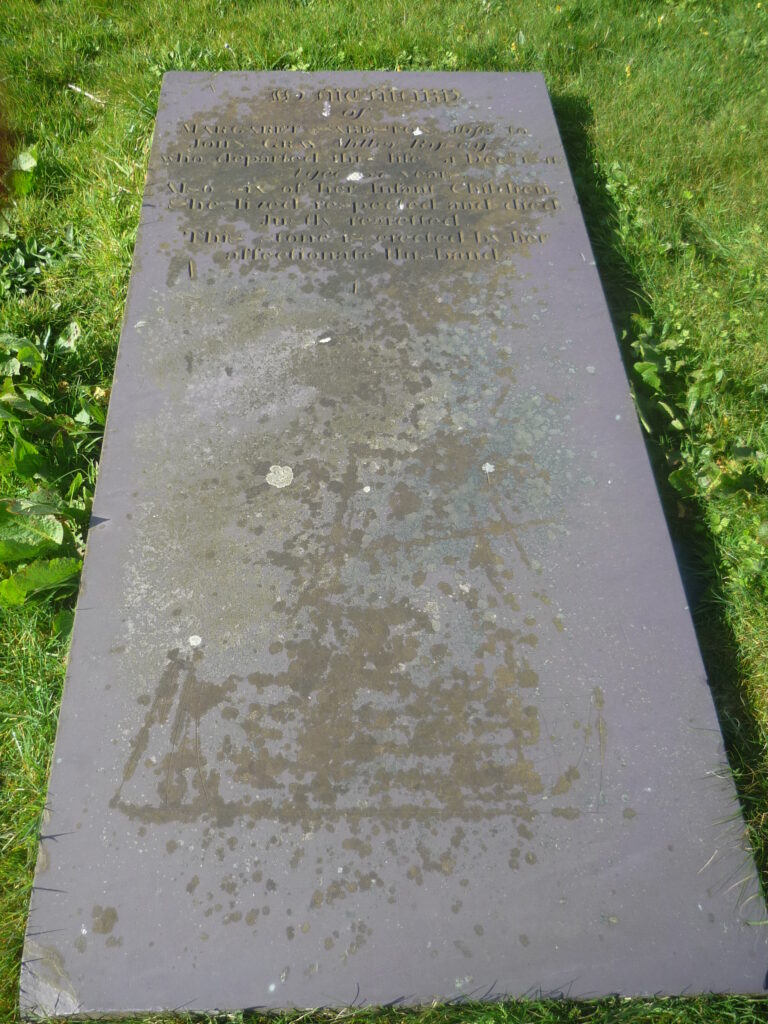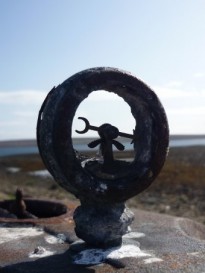Island communities were only too familiar with loss of life at sea, not least fishermen. North Walls and Brims were no exception. In many cases more than one person was drowned, sometimes from the same family group; the death of the breadwinner made the consequences even worse.
The loss of the Longhope Lifeboat with the entire crew, nearly all from Brims, on 17 March 1969 is undoubtedly the most well-known and perhaps the most tragic as there were two sets of father and two sons. Yet from 1874 the Longhope lifeboat had played an often crucial role in averting other tragedies.
View from the OPRs
Looking through the old parish registers for the parish of Walls, the toll from the sea is relentless.1Old Parish Registers Deaths and Burials, Walls & Flotta, Orkney. 032/ 40 1-245. https://www.scotlandspeople.gov.uk A few examples:
- 18 November 1829 – “died by water on the way from Stromness”, James Flett, 40, Benjamin Corrigill, 22 years 5 months, William McKenzie, 18, Jean Burnie, 25.
- 10 April 1836 – “died on the passage from Stromness”, Charles T Wilson, 34, William Swanson, 54, James Constable, 66.
- 22 October 1840 – “drowned at Brims”, John Bain, aged 76.
- 9 November 1842 – “by drowning at or near Breakness [Breckness near Stromness] on the north side of Hoy Sound”, Captain Roderick Lees, of the Schooner Brumby of Kirkwall, James Robertson “on the same melancholy occasion… thought to have died of cold and fatigue on the wreck at Breakness”, another man died on the wreck “but neither a native or residenter in this place”.
- 19 August 1848 – five men drowned on the coast of Wick; the two married men, James Manson, Brims, and James Sutherland, Saltness, left seven children between them.
- 12 February 1850 – “drowned in returning from Stromness, the wind blowing strongly from N [north] in the snow showers”, James Gray, Thomas Burnie and Thomas Manson, the last “belonging to Harray”. Ironically, Harray is Orkney’s only parish with no seaboard.
So a mix of people going about their daily lives, travel to Stromness, the second town in the Orkney mainland, merchant seamen and fisherman almost certainly in the case of the Wick deaths. (I’ve tried to focus on people known or likely to have been from North Walls or Brims but the registers do not usually include sufficient detail to be certain.)
On land
The Walls OPR death and burial records are available from 1823 but only start to include cause of death and sometimes other details from 1829, as examples above show, though there are lapses with first names missing in a few cases. There are frequent glimpses of tragedies for individual families.
- 1 February 1831 – John Gray “died by the snow losing his road”, aged 62 years 6 months.
- 4 May 1837 – John Wilson “by the suffering endured at the Straits” aged 19 years 6 months. Straits would be the Davis Straits; John had probably been at the whaling.
- 28 December 1841 – James Gray “a child only a few days old”.
- 31 December 1841 – Margaret Sabeston, wife to John Gray, Tacksman, Rysa, “of inflamation soon after delivery”. Very probably mother and son. Her gravestone is below. The boat under sail carved into the lower half of the stone is appropriate as her body would have been taken by boat from Rysa, in the very north of Walls, to the churchyard at Osmondwall in South Walls.

Another family group:
- September 1846 – John Robson junior, Hilltown, “of Fever”, 19 years.
- October 1846 – “a child of the same parents as the last on the day after its birth”.
- 30 October 1846 – Anne Robson “(same family) of Fever” 15 years, 11 months.
Forgotten
Here I have only looked at a small sample of death records, there were undoubtedly many other tragedies short of death. But the very fact that there is a death record saves a life from being forgotten, not least those nameless infants who barely lived at all, which is a different kind of tragedy.
A post for the Society for One-Place Studies #OnePlaceTragedies theme.


As fascinating as ever. Being ‘lost at sea’ was an occupational hazard but these people, living in an island, had little choice.